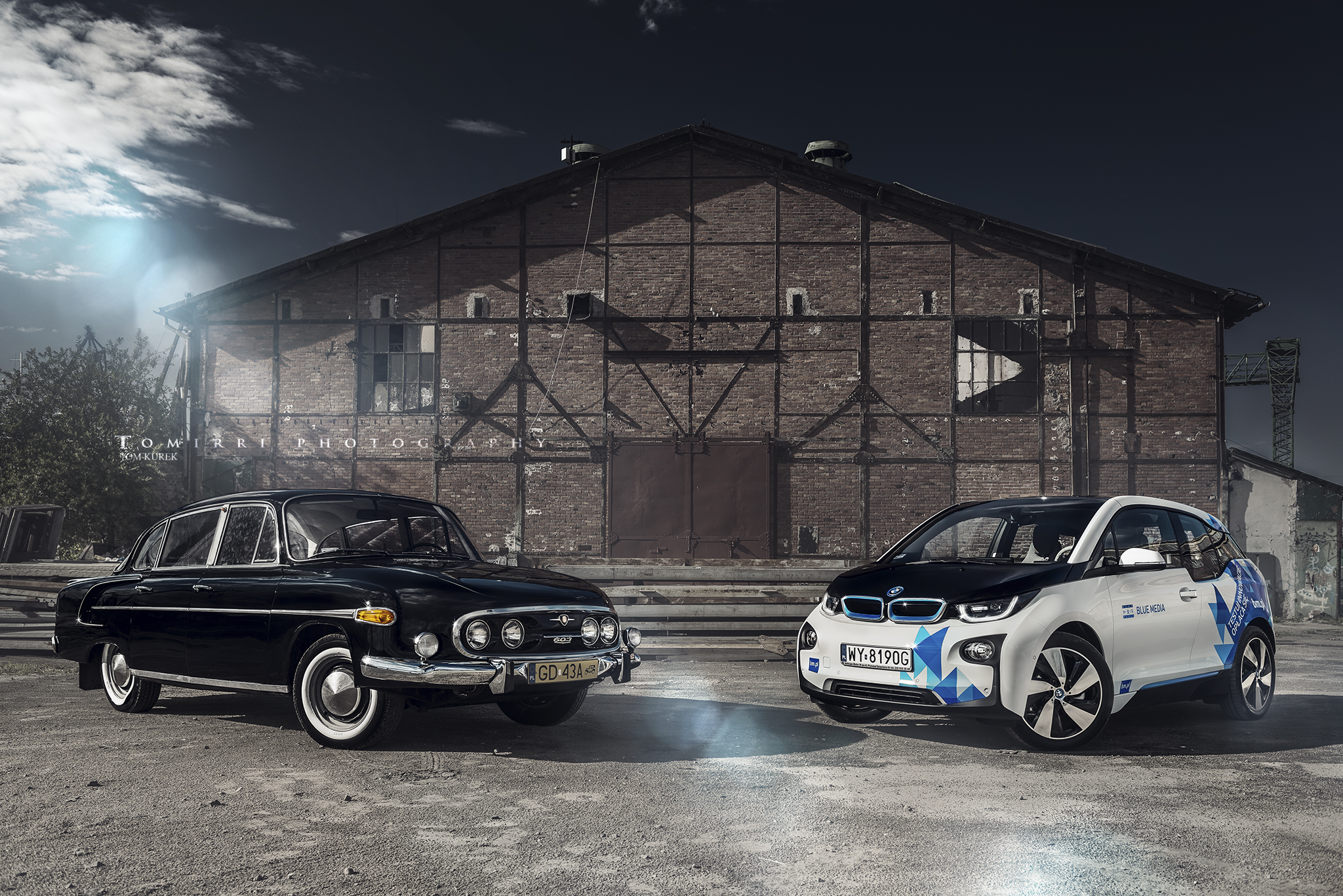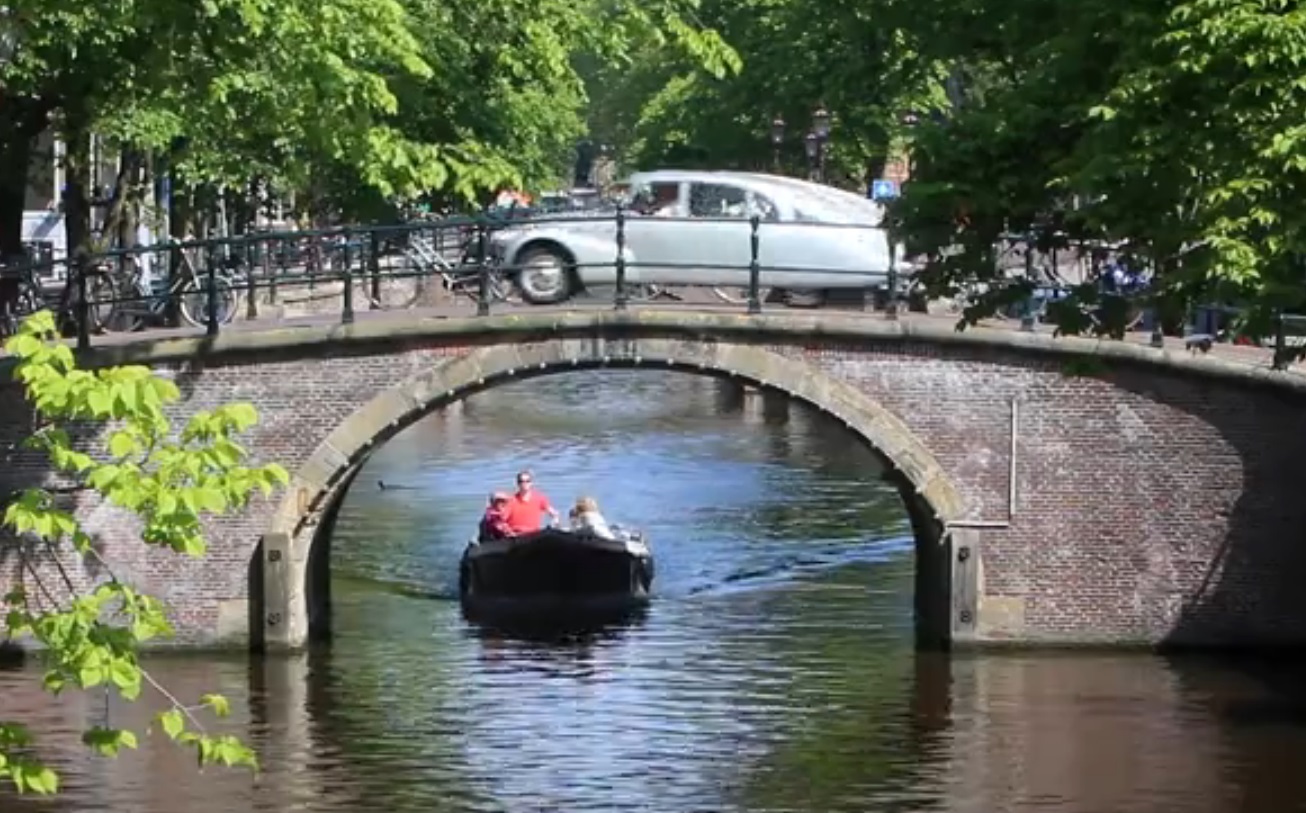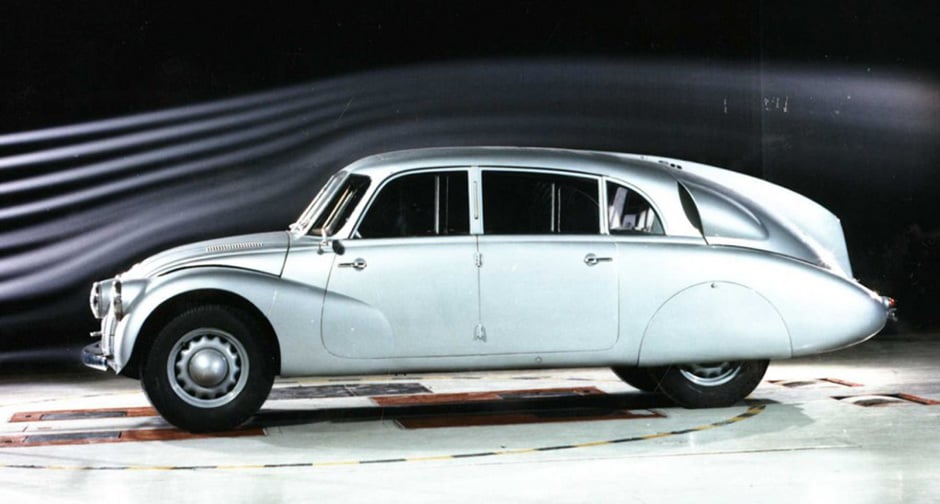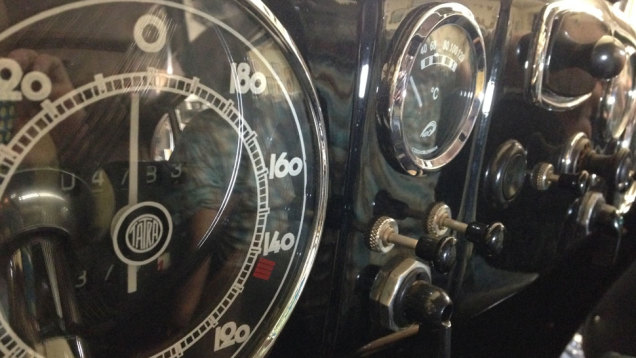
Five weird saloons
Pebble Beach press reports

http://blog.classiccars.com/24478/
http://autoweek.com/article/pebble-beach-concours/czech-secret-weapon-will-shine-pebble-beach
San Francisco newspaper coverage:
http://www.sfgate.com/cars/slideshow/Concours-d-Elegance-91822/photo-6740976.php
Photo coverage of event:
https://secure.guideautoweb.com/en/galleries/26351/2014_pebble_beach_concours_d%27elegance/?im=62
Classic Car coverage (drop down to last grouping of photos within the main article):
http://www.classicdriver.com/en/article/cars/pebble-beach-concours-2014-best-and-rest
German:
http://www.autobild.de/klassik/artikel/pebble-beach-2014-concours-d-elegance-5264849.html
http://www.motor-klassik.de/szene/pebble-beach-concours-d-elegance-2014-ex-rossellini-ferrari-gewinnt-in-pebble-beach-8546382.html with Tatra photos on 9.35, 51, 101, 110
Pebble Beach Concours d’Elegance: the Anointed One
The choice of the Jon Shirley’s 1954 Ferrari 375 MM Scaglietti Coupe was not a total surprise given its provenance, quality of restoration and undisputed elegance. It still sent a ripple through the knowledgeable crowd gathered before The Lodge overlooking the 18th green of one of the world’s most famous golf courses. This is the first time since 1954 that a Post-War era vehicle has won the top prize, namely Best of Show, at the Pebble Beach Concours d’Elegance in Monterey.
How to reduce 218 cars from 15 countries divided across 27 classes down to one Best of Show? That is the task set before Chief Judge Chris Bock and his team of experts. Armed with a combined total of 1,893 years of experience there is every chance that their final decision will be the correct one. According to Nic Waller, a member of the Concours Selection Committee, it was a close run thing but a fine decision:
“It could not go to a better or more unique Ferrari. It’s been to Pebble before about 15 years ago [when it won First in Class], but it’s since been re-restored and a lot of time and effort taken to bring it back to exactly as it was when it was first delivered to Roberto Rossellini. In Ferrari language, in any language it ticks all the boxes.”
 954 Ferrari 375 MM Scaglietti CoupeRossellini is perhaps as good a testimony for the car’s elegance as one could need. As a filmmaker, whose Roma città aperta won the Palme d’Or at Cannes in 1946 and who was married to Ingrid Bergman, he knew a thing or two about art and beauty. Jon Shirley, owner of the Ferrari, is another aficionado of the finer things in the automotive world. For him the reasoning behind his success was obvious.
954 Ferrari 375 MM Scaglietti CoupeRossellini is perhaps as good a testimony for the car’s elegance as one could need. As a filmmaker, whose Roma città aperta won the Palme d’Or at Cannes in 1946 and who was married to Ingrid Bergman, he knew a thing or two about art and beauty. Jon Shirley, owner of the Ferrari, is another aficionado of the finer things in the automotive world. For him the reasoning behind his success was obvious.
“It has super elegant lines and elegance is usually what ends up here on the ramp as Best of Show,” he said. “As someone who collects Ferraris I always thought that one day it had to happen; there are a lot of great Post-War cars and I never quite understood why one had never managed to win!”
Shirley is first to admit he is very fortunate to own the car. Not just because of its revered features, but also the story behind its acquisition: “It was found in Paris in pieces, I was lucky to have the help of a young Englishman – who spoke French fluently – in the middle of the negotiations. Plus, we had lived in Belgium for a number of years and my late wife spoke a little French which all helped charm the owner. He wasn’t going to sell to someone he didn’t like.”
The Pebble Beach Concours d’Elegance is much more than just a competition to find the most beautiful car. It is a celebration of the passion and dedication of an elite group of individuals dedicated to preserving automotive history.
To become an entrant at Pebble Beach Concours you have to be invited. Each car is vetted and considered by a committee before it is selected for entry. The vehicles chosen have either been painstakingly restored or carefully preserved over time. According to Sandra Button, the Concours Chairman: “All are [here], thanks to the dedicated and passionate enthusiasts who want to be the best possible stewards of these vehicles – not only caring for them, but sharing them with others.” These are qualities that Rolex greatly admires.
The list of marques represented at the event is a who’s who of the historic automotive world. Vehicles which in their day were leaders in their class, and which today are some of finest remaining examples. Cars from the golden age of coachwork – the 1920s and 30s – including famous names such as Duesenberg, Cadillac, Packard, Chrysler Imperial, Pierce Arrow, Hispano-Suiza, Rolls Royce, Bugatti, Mercedes-Benz, Bentley, Talbot-Lago, Delage, and Delahaye spread across the green sward. Elsewhere, Post-War sporting giants such as Ferrari, Aston Martin, Alfa Romeo, Maserati, BMW, Riley and Jaguar.
 1939 Talbot-Lago T150C-SS Pourtout CoupePresent, too, were some lesser known, though no less significant names. Pebble Beach had chosen 2014 to recognize the contribution of Hans Ledwinka and the progressive Czechoslovakian Tatra together with the all-American Ruxton and Cord.
1939 Talbot-Lago T150C-SS Pourtout CoupePresent, too, were some lesser known, though no less significant names. Pebble Beach had chosen 2014 to recognize the contribution of Hans Ledwinka and the progressive Czechoslovakian Tatra together with the all-American Ruxton and Cord.
Jim Fasnacht is an authority on the Ruxton and the driving force behind a collection of 16 out of the 19 surviving models from the 96 built being on the field: “It was a team effort with a lot of wonderful people involved to get them here. I was captured a long time ago by the car’s silhouette and its technology. The engineering of the gearbox was revolutionary. It enabled the car to be lower, shorter, lighter and more nimble than other front-wheel drive cars of the era.” Fasnacht and his wife own seven Ruxtons. He admits this is partly obsession, but mostly enthusiasm to preserve the history of a car where “so few were made it almost fell through the crack.” Fasnacht was presented with a Rolex timepiece in recognition of his dedication during the Pebble Beach Tour d’Elegance lunch stop in Carmel.
Coincidentally another car that has caught Fasnacht’s imagination is the Cord. Another front-wheel drive car, the Cord was the brand name for an innovative car manufactured by Auburn Automobile under the stewardship of Errett L. Cord, who twice appeared on the cover of Time magazine. Chris Cord, the grandson of Errett and a highly-regarded racing driver with appearances at 24 Hours of Le Mans and the Rolex 24 Hours At Daytona, was exhibiting an immaculate 1937 Cord 812 SC Cabriolet at this year’s Concours.
“The car is a wonderful car to drive, it is such a modern car despite its age. Gordon Buehrig’s design is considered iconic. It is front-wheel drive, it has no running boards and it’s disappearing headlights make the car extremely streamlined, and good-looking,” explained Cord. Cord is a huge supporter of the Concours, what it stands for and the opportunity to share his car: “Ours is a very personal story and we love coming to events like this talking about our family’s automotive history. These cars are a remembrance of that time, and my grandfather, and give us an immense sense of pride.”
http://www.racer.com/more/historic/item/107534-pebble-beach-concours-d-elegance-the-anointed-one
BMW i3 compared to T 603

Today, we have a chance to showcase a somewhat unusual photoshoot depicting two cars that are generations apart, but similar in its shape and form.
First one is a Soviet era luxury vehicle (if there ever was such a thing) powered by a Tatra 603G V8 air-cooled engine with a displacement of 2474 cc, which develops 77,5kW that power the rear wheels.
If you think that rudimentary suspension, lack of any modern technology involved, or simply put, lacking anything and everything, is and will be the main thing about this vehicle, you are terribly wrong. The V8 overhead valve engine weighed only 160 kg (350 lb), allowing the car to have 47/53 front/rear interaxle weight distribution when fully loaded. The engine was already used in the late Tatra 87 and its extreme reliability was confirmed by previous use in Tatra race cars or military light truck T805. The air-cooling system was designed to cool the most heated parts of the engine more effectively.
More at: http://www.bmwblog.com/2014/08/18/times-changing-bmw-i3-work-together-tatra-603/
Chinese article on car streamlining
流线型车终量产 风阻探索不停歇
在先驱者们的感召之下,一场延续至今的车身外形的大革命打响了。史料记载,从2020年代起,、梅赛德斯等车企都开始了流线型原型车的制造。而在当时,最热衷制造流线型的,莫过于来自捷克的Tatra。这个品牌现在在中国被人戏称为“太拖拉”,而且更为我们熟知的其实是它的卡车。不过在20世纪二、三十年代,Tatra可是引领流线型造型的一代名家。这其中的关键人物是Paul Jaray,一位匈牙利裔的设计师。在与Tatra联手之前,他曾是一位优秀的飞艇设计师,而他研究的核心正是流线造型的应用。1927年,他建立了一家名为“流线型车身”的公司,专门进行流线型汽车车身的设计。此后不久,Tatra与他达成了合作。从1931年到1939年二战打响,Tatra共祭出了V570、T77、T87、T97这四款流线造型汽车。而T77也成为了世界上首款依照空气动力学原理设计的量产车。人们使用1:5比例的T77模型进行了实验,T77的只有0.2455。今天我们所开的汽车,大多数也达不到这个水平。除了流线型之外,T77还应用了独立、镁合金风冷V8、干式等等一系列在当时非常先进的技术,可谓炫目异常。
TRD Tatra-Treffen auf Ringberg

Insbesondere der Tatra 603, von 1956 bis 1975 im tschechoslowakischen Bratislava produziert, galt als sozialistische Luxuskarosse. Besonderheiten waren die ungewöhnliche Stromlinien betonte Gestaltung des Automobils und der luftgekühltenV 8-Motor im Heck. Das Fahrzeug, das meist von Staatsbediensteten und hohen Parteifunktionären genutzt wurde, wies 105 PS auf und brachte es auf Spitzengeschwindigkeiten um die 170 km/h. Vom Tatra 603 wurden knapp 20500 Modelle, zumeist in Handarbeit im gleichnamigen Werk gefertigt. Ab 1975 wurde der T 613 hergestellt. Tatras gelten heute als beliebte Oldtimer nicht nur in den ehemaligen Ostblockländern.
Im Suhler Ringberg Hotel haben sich 75 Tatra-Besitzer mit ihren Schmuckstücken angesagt. Am Freitag sind diese bei einer Ausfahrt zwischen Dingsleben, Kloster Veßra und Suhl zu bestaunen, am Samstag zwischen Frauenwald, Oberhof und Eisfeld. Ab späten Nachmittag können die stattlichen Fahrzeuge sowohl Freitag als auch Samstag auf dem hoteleigenen Parkplatz betrachtet werden. Gerne sind die Besitzer auch zu Fachgesprächen bereit.
Automobil-Treffen auf dem Ringberg sind beliebt aufgrund der einmaligen Bedingungen, welche das Hotel für Fahrer und Fahrzeuge zu bieten hat.
Photos by Peter Visser:https://www.flickr.com/photos/davydutchy/sets/72157645987238067/
Along the Amsterdam canals: T 87 video

Dutch daily De Telegraaf in cooperation with the Autovisie magazin, phoned me last year if I would be interested to show a Tatra in their series “Uw Garage.” Due to mechanical problems, I had no car available and we decided to wait until this spring when I expected to have a car ready. I had two condtions: wheather had to be dry and the video had to be shot in Amsterdam along the canals. Mid May we reserved a whole day and here is the result. It was more or less announced by the Dutch Daily De Telegraaf on saturday, May 31, while a two page article appeared in the Autovisie Magazin of June 5th.
T 87 VIDEO: http://www.telegraaf.nl/tv/autovisie/tv/article22711020.ece
A small Tatra streamliners story
The art of aerodynamics

Airflow-optimised cars date back to the 1920s. Although it was initially racing cars that inspired the art of aerodynamics (bar a few notable exceptions), the resulting principles eventually filtered down to road machines – and soon there were wind tunnels at HQs from Stuttgart to Detroit…
The importance of aerodynamic efficiency in automotive design was initially appreciated by only a few. Naturally, these included aeronautical engineers such as Hans Ledwinka and Paul Jaray – the pair behind the first mass-produced, aerodynamically-focused road car, the Tatra 77 – as well as automotive artistes such as Giuseppe Figoni. The latter, the creative half of French coachbuilder Figoni et Falaschi, realised beauty often went hand-in-hand with aerodynamic efficiency. His design for the Talbot-Lago T23 Teardrop Coupé is a perfect example of stunning aesthetics moulded by the forces of nature; his work on the Le Mans-winning Alfa Romeo 8C 2300 of 1932 proved the value of his intuition with measurable competition results.
T 87 in Jalopnik
 Los Angeles T 87 owners Dydia DeLyser and Paul Greenstein will cross the Atlantic for this year’s TFI Noordwijkerhout Rally. Dydia has Dutch roots and some family in NL still and speaks some Dutch. Regrettably, they will not take their magnificent T 87 with them. Instead, they will drive another T 87 at the Dutch TFI meeting at the end of May. Rallye info: http://www.tatraclub.at/index.php?lang=en
Los Angeles T 87 owners Dydia DeLyser and Paul Greenstein will cross the Atlantic for this year’s TFI Noordwijkerhout Rally. Dydia has Dutch roots and some family in NL still and speaks some Dutch. Regrettably, they will not take their magnificent T 87 with them. Instead, they will drive another T 87 at the Dutch TFI meeting at the end of May. Rallye info: http://www.tatraclub.at/index.php?lang=en
The Jalopnik T 87 article: http://jalopnik.com/1941-tatra-t87-the-jalopnik-classic-review-1557341677

